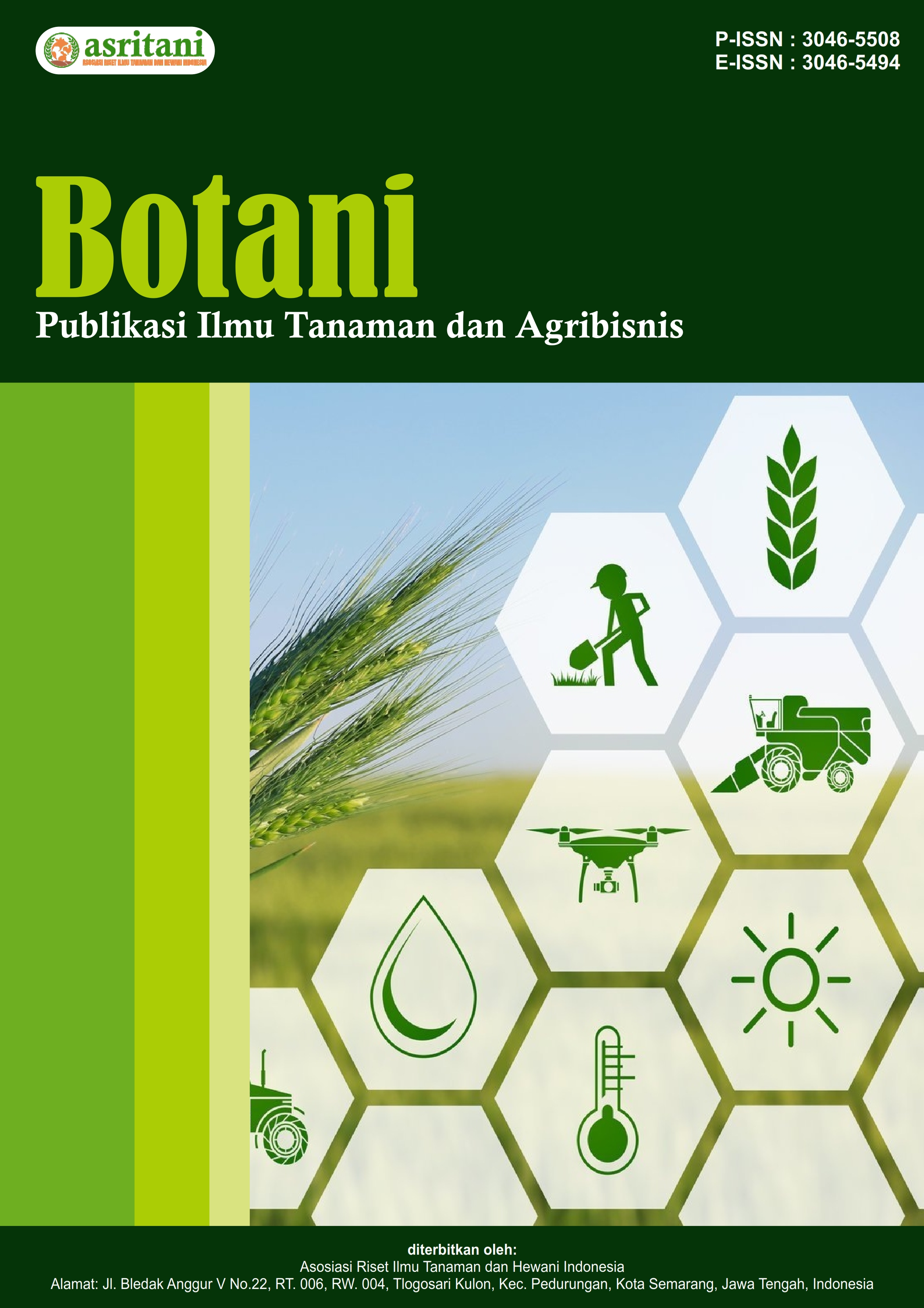Inovasi Teh Celup Herbal Daun Sirih Cina Dengan Variasi Suhu Pengeringan
DOI:
https://doi.org/10.62951/botani.v2i2.338Keywords:
Chinese Betel Leaf Tea Bag, Lemongrass, Cardamom, Drying Temperature 40°C and 60°CAbstract
Herbal Tea Bag Product Made from Chinese Betel Leaf with Combination of Lemongrass and Cardamom. This research aims to: 1) investigate the organoleptic properties of herbal tea bags made from Chinese betel leaf combined with lemongrass and cardamom, and 2) assess the sensory quality of the product through hedonic testing. This experimental study employed an observational method using a sensory evaluation panel consisting of 35 members (5 experts and 30 semi-trained panelists). Data were collected using a questionnaire. The independent variables were the proportion of Chinese betel leaf (2g, 4g, and 6g) and the addition of lemongrass and cardamom (2g) with temperature variations (40°C and 60°C) for 4 hours. The dependent variables were the sensory qualities, including shape, color, aroma, taste, and texture. The control variables included the type of materials, equipment, and processing techniques. Data analysis was performed using two-way anava and Duncan's multiple range test. The results showed that: 1) the proportion of Chinese betel leaf affected the shape and taste, 2) the drying temperature affected the color, taste, and texture, and 3) there was no interaction between the proportion of Chinese betel leaf and the addition of lemongrass and cardamom on the sensory quality of the herbal tea bags.
References
Ahmadi, K., & Estiasih, T. (2009). Teknologi pengolahan pangan. Bumi Aksara.
Akbar, C. I., & Arini, F. (2019). Teh rambut jagung dengan penambahan daun stevia sebagai alternatif minuman fungsional bagi penderita diabetes melitus tipe 2. Jurnal Aplikasi Teknologi Pangan, 8(2).
Danamurti, Y. (2009). Teknologi pengolahan teh. Grasindo.
Estiasih, T., & Ahmadi, K. (2009). Teknologi pengolahan pangan. Bumi Aksara.
Fellow, P. J. (1988). Food processing technology: Principle and practice. Ellis Horwood.
Hambali, Nasution, E. M. Z., & Herliana, E. (2005). Membuat aneka herbal tea. Penebar Swadaya.
Hamza, R., & Osman, N. (2012). Using of coffee and cardamom mixture to ameliorate oxidative stress induced in γ-irradiated rats. Biochemistry and Analytical Biochemistry, 46(1), 263–273.
Irina, I., & Mohamed, G. (2012). Biological activities and effects of food processing on flavonoids as phenolic antioxidants. Nancy University-ENSAIA, France. https://doi.org/10.5772/30690
Nurcholis, W., Putri, D. N. S., Husnawati, A., Aisyah, S. I., & Priosoeryanto, B. P. (2021). Total flavonoid content and antioxidant activity of ethanol and ethyl acetate extracts from accessions of Amomum compactum fruits. Annals of Agricultural Sciences, 66, 58–62. https://doi.org/10.1016/j.aoas.2021.04.001
Pinem. (2004). Rancang bangun alat pengeringan ikan teri kapasitas 12 kg/jam. Jurnal Teknik SIMETRIKA, 3(3), 249–253.
Sihombing, T. J. (2016). Efek antipiretik ekstrak rimpang kapulaga (Amomum compactum) terhadap suhu rektal dan hitung jenis leukosit mencit (Mus musculus L.) jantan. Departemen Biologi, Fakultas Matematika dan Ilmu Pengetahuan Alam, Universitas Sumatera Utara, 22–41.
Tambunan, L. R. (2017). Isolasi dan identifikasi minyak atsiri dari biji tanaman kapulaga (Amomum caedamomum Willd). Jurnal Kimia Riset, 2(1).
Winarno, F. G. (2004). Kimia pangan dan gizi (Edisi ke-11). Gramedia Pustaka Utama.
Downloads
Published
How to Cite
Issue
Section
License
Copyright (c) 2025 Botani : Publikasi Ilmu Tanaman dan Agribisnis

This work is licensed under a Creative Commons Attribution-ShareAlike 4.0 International License.





